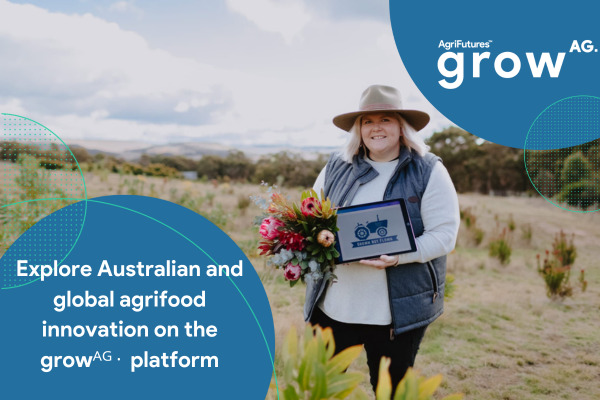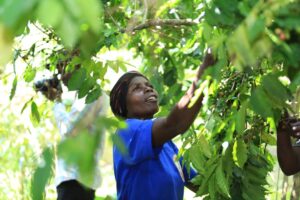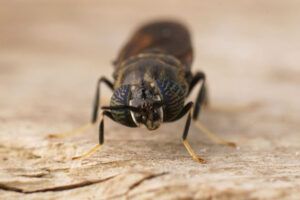Editor’s Note: Simon Kremer is a European patent attorney with 25 years’ experience of advising clients in IP matters, particularly in life sciences area. He has a PhD in Biochemistry and previously worked in an IP department for the UK Government where he advised MAFF (later DEFRA) and many research establishments about patents and other IP matters. Since 1997, Kremer has worked at Mewburn Ellis, where his clients in plant innovation and agricultural biotechnology have included Rothamsted Research, Plant Bioscience Limited, John Innes Centre,Horticulture Research International (later Warwick), Dow Agrosciences, DuPont, and many University Tech Transfer offices. Kremer sits on the Life Sciences Committee of the UK Chartered Institute of Patent Attorneys (CIPA) and is a member of the Editorial Board of Life Sciences Intellectual Property Review.

Kremer recently attending the Rothamsted Open Innovation Forum for agriculture technology, and here offers some thoughts on how IP plays into open ag innovation.
“Open Innovation” (OI) is a powerful model for collaborating on research and development that can involve a wide variety of interactions between parties.
A key element of OI is the realisation that a generation of new knowledge can be accomplished more efficiently by multiple parties, each with different expertise than it can by a single entity.
In early 2017, Rothamsted Research in the UK hosted the first Rothamsted Open Innovation Forum for agriculture. The aim of the event was to foster collaboration between industry, research, and the agritech startup community to solve agriculture’s biggest challenges.
These challenges are extensive, both in number and variety. The wide range of technologies discussed at the forum included aquaponics, drone technology, crop yields, big data analysis, antibiotic resistance, novel apps, and many others. The social acceptance of new technologies, and the statutory systems, which exist to regulate or control them, were also talking points during the event.
During the event, it soon became clear that there are many different ways that players from all parts of the agriculture industry can collaborate on innovation to help sustainably feed and power the world. We hope that these collaborations, involving large agribusinesses, small startups, research organisations and more, will eventually generate new data sources, ideas and solutions relevant to the short-term and long-term problems facing the agriculture industry.
Open Innovation is not without its challenges, however, as it can often involve collaborators sharing resources and research. This is particularly a challenge when it comes to Intellectual Property.
“Intellectual property” (IP) refers to creations, technical or otherwise, of the intellect. Systems of “intellectual property rights” (IPRs) exist in most territories or regions to protect different types of IP and include patents, trademarks, design rights, and copyright — relevant not just to artistic works, but also software. IPRs also include certain types of database rights, plant variety rights and, to some extent, trade secrets.
IPRs are time-limited types of exclusivity, or other legal protection, which exist to reward and incentivise the creation, and ultimately the sharing, of new ideas and innovations. IPRs are relevant not only to disruptive or radical new technologies but also to more incremental contributions. For some IPRs, such as patents, “industrial applicability” or practical or technical utility of the idea, is a key requirement of the right, while for other types of IPR, such as database rights, the IPR represents a reward for the labour of the entity, which generates or compiles the data.
Almost all types of research, whether collaborative or otherwise, will lead to the creation of some kind of new IP. Very often this IP will be susceptible to protection by one or more types of IPR. For this reason, it is standard that traditional collaborative research and development relationships will include terms that deal with the generation, use, and disposition of the IP brought into the agreement, and resulting from it.
But, it is sometimes suggested that OI processes should not be bound by IP considerations in the same way as these more conventional arrangements. For example, there may be concerns that a focus on IP issues will somehow inhibit collaboration and free exchange of ideas within the OI model. In some ways, this might even erode trust between the parties. Alternatively, it may simply be assumed that the outcome of the OI will be at an early (“pre-competitive”) stage and that IP can, therefore, be considered later when the research is further developed and applied.
However, this does not mean that IP arrangements should not be considered at the outset of any OI activity, particularly know-how and patents.
Since OI is actually premised on the parties bringing different types of insight and ability to the collaboration, it is prudent that any agreement governing the OI project acknowledges the “background” IP which the parties can bring. It should also deal with later access to that background. This can actually avoid disputes arising during or after the project, and therefore keep the focus on the innovation itself.
Furthermore, although OI is often associated with very early stage knowledge creation or improvement, it can often go beyond that to further development and even commercialisation.
Bringing the benefits of the innovations created or started by the OI model to market will generally require further investment, which may involve parties not even involved in the original OI. To make this further step happen, it will almost certainly be necessary to demonstrate a coherent IP position. Relying on default statutory assumptions or implicit understandings about “foreground” IP ownership will not achieve this, especially if funding for the OI has been derived from outside the parties.
Therefore, a proper consideration, at the outset of the OI project, of all the issues likely to arise about the ownership and rights in the “foreground” IP — which the collaboration hopes or expects to generate — can maximise the chances that the public will eventually benefit from the OI process. Furthermore, as a by-product of this analysis, the effort required to define or predict the IP associated with the collaboration at the outset, and the IP hopefully resulting from the arrangement, may, in fact, help to crystallise ideas about what might be achieved. The confidence that comes from knowing that IP considerations have been properly aired right from the start should enhance the trust in the collaboration, and facilitate the exchange of ideas.
With so many real and practical problems that need to be answered in agriculture, it’s important for OI initiatives to focus ensuring that the best innovative solutions will eventually end up being applied in the real world. Considering IP ahead of the game is one way to ensure innovators do not meet deployment hurdles later down the line.
What do you think? Is IP protection essential or inhibitive to open innovation? Email [email protected]
















